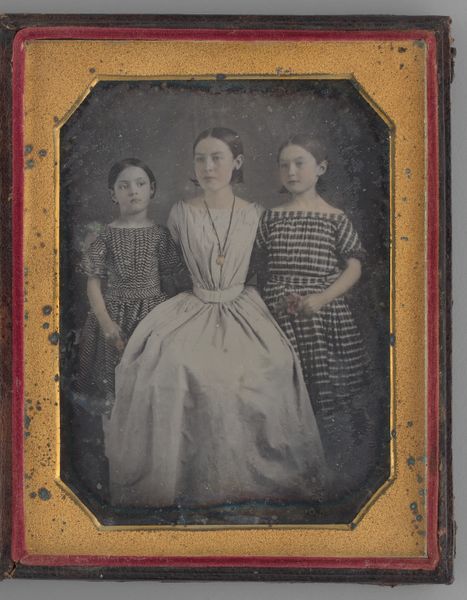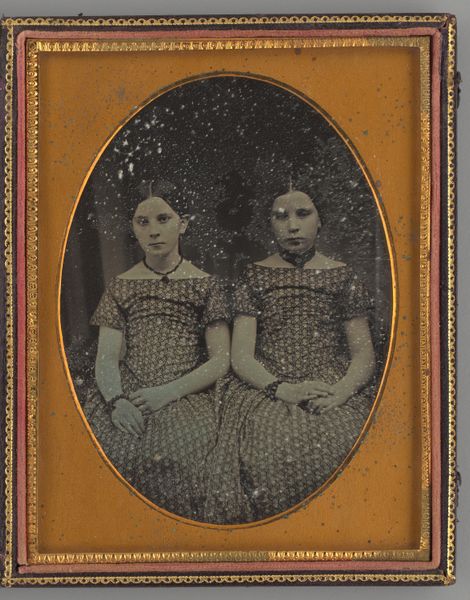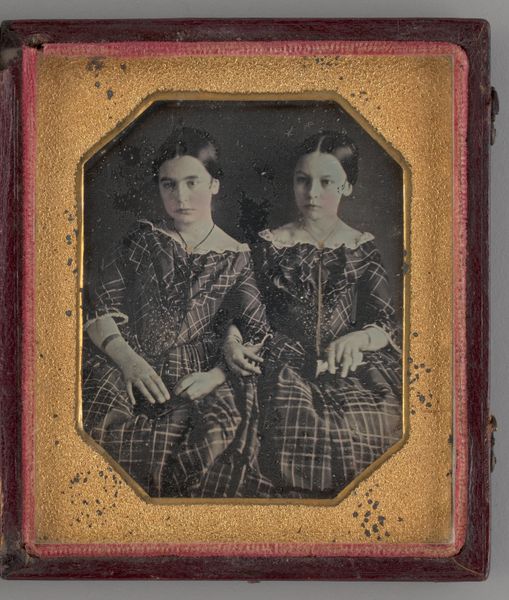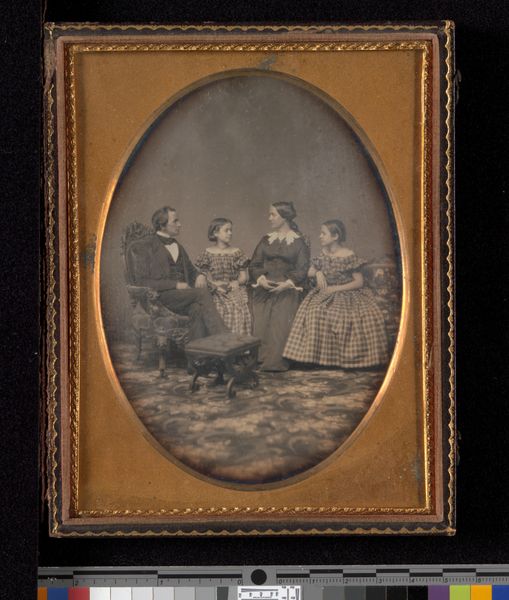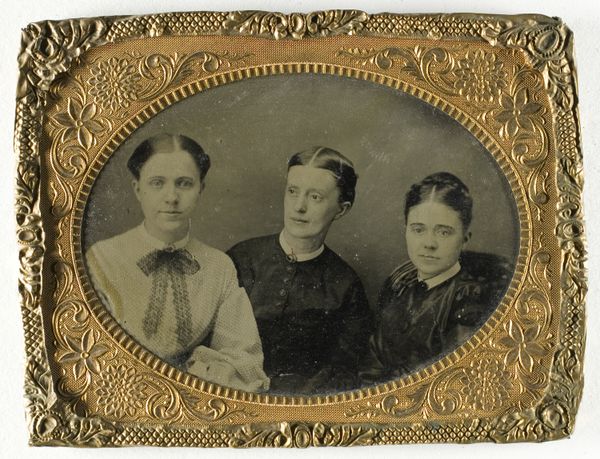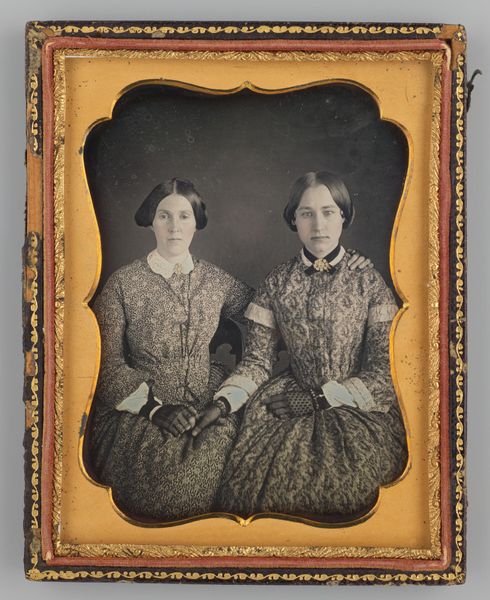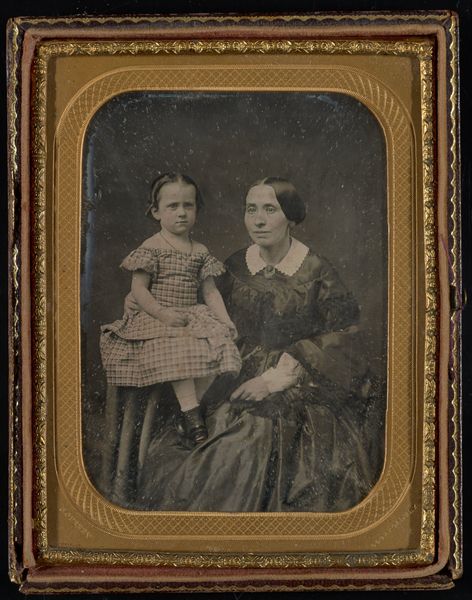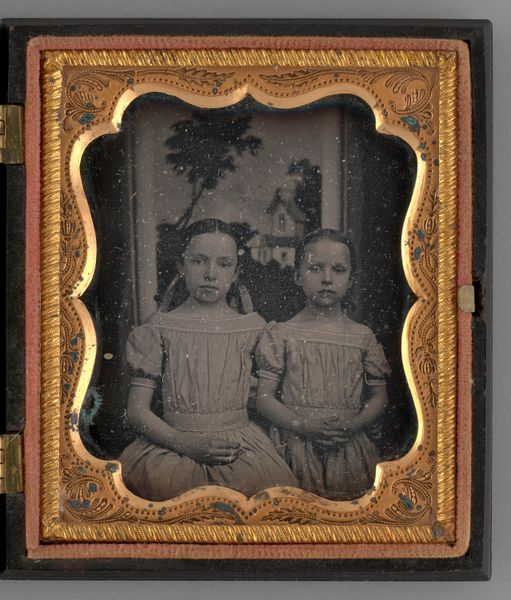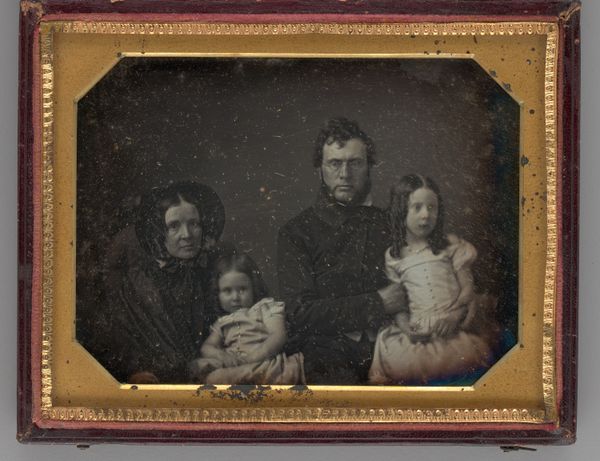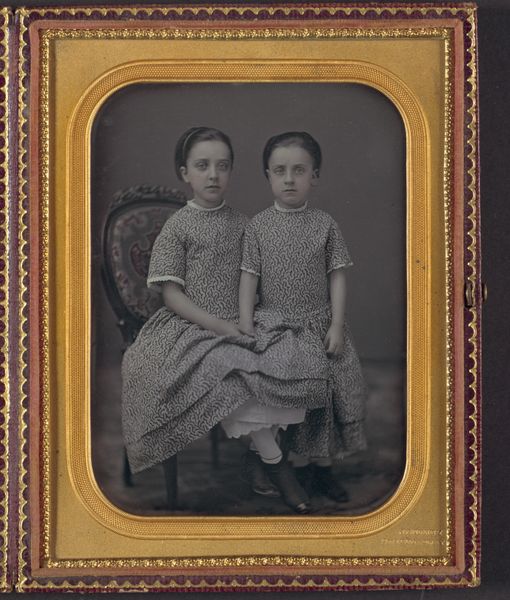
daguerreotype, photography
#
portrait
#
daguerreotype
#
photography
#
group-portraits
#
romanticism
#
realism
Dimensions: 13.8 × 10.8 cm (5 1/2 × 4 1/4 in., plate); 15.2 × 24.2 × 1.1 cm (open case); 15.2 × 12.1 × 2.1 cm (case)
Copyright: Public Domain
This portrait of a woman with two girls, whose maker is unknown, involves a fascinating and now obsolete technology: the daguerreotype. This early photographic process, popular in the mid-19th century, captured an image on a silvered copper plate. Each daguerreotype is unique and unrepeatable. Consider the labor involved: the meticulous polishing of the silver, the careful chemistry, and the long exposure time, requiring the subjects to remain perfectly still. The final image, delicate and reflective, is then housed in a protective case, elevating it to the status of a precious object. Looking closely, you might notice imperfections and signs of wear. These aren't flaws, but rather evidence of the object’s history. Daguerreotypes offered a new form of portraiture, democratizing image-making. While painted portraits remained the preserve of the wealthy, daguerreotypes allowed a wider segment of society to participate in visual culture, capturing their likeness for posterity. The daguerreotype thus straddles the line between technological innovation, artistic expression, and social history.
Comments
No comments
Be the first to comment and join the conversation on the ultimate creative platform.
